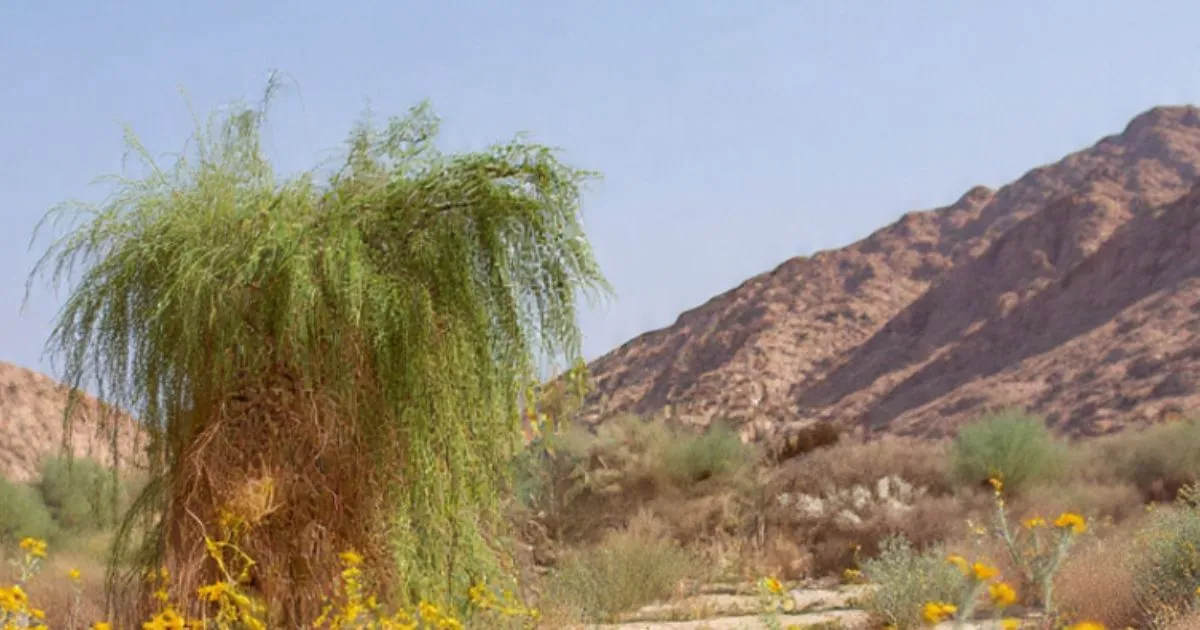Why Madinah Birdwatching is Your Next Unforgettable Adventure
Table of Contents
1. Introduction: Beyond the Spiritual – The Dawn of Madinah Birdwatching
The Madinah Region, a name that resonates with profound spiritual significance for over a billion people, is quietly unveiling a new dimension of its identity. Beneath its vast, serene skies and within its lush, life-sustaining valleys, a vibrant ecological narrative is unfolding. Madinah birdwatching is emerging as a revolutionary form of ecotourism, masterfully bridging the gap between deep cultural heritage and forward-thinking environmental stewardship. This is not merely a niche hobby for enthusiasts; it is a strategic, visionary initiative led by the Al Madinah Region Development Authority to showcase a different, equally captivating side of this historic region.
The narrative of Madinah birdwatching is one of discovery and reconnection. It invites pilgrims, tourists, and locals alike to look beyond the minarets and into the palm groves, to listen for the calls of the Weaver Bird alongside the call to prayer. This synergy creates a holistic travel experience, offering moments of tranquil contemplation in nature that complement the spiritual journey. By documenting 26 resident species and establishing a framework for sustainable tourism, the Authority is not just protecting biodiversity; it is cultivating a new legacy for Madinah, positioning it as a global model for how sacred and natural landscapes can coexist and thrive together. This in-depth exploration will guide you through the feathered protagonists, the strategic vision, and the practical steps to immerse yourself in the unique world of Madinah birdwatching.

Alt Text: The pristine landscape of a prime Madinah birdwatching location at dawn, showcasing the perfect habitat for diverse species.
2. The Ecological Tapestry: A Symphony of Feathers in the Desert
The success of Madinah birdwatching is rooted in the region’s surprisingly diverse ecosystems. The arid plains are punctuated by vital oases—the wadis (valleys), agricultural farms, and coastal strips that act as green arteries, sustaining life. These habitats host a complex community of birds, each species a finely tuned instrument in the desert’s ecological symphony.
2.1. The Green Corridor Dwellers: Weavers and Songbirds
The lusher environments of Madinah’s gardens and valleys, such as the renowned Wadi Al-Aqiq, serve as the primary stage for Madinah birdwatching. These areas are bustling with activity and color.
- The Weaver Bird (Ploccus sp.): Often the star of the show, the male Weaver Bird is a feathered architect. Its brilliant yellow plumage is a flash of sunlight against the green fronds. But its true marvel is its nest—an intricately woven, hanging chamber, constructed using a series of knots and loops that would challenge human dexterity. This behavior, driven by courtship, is a profound spectacle of natural selection and a highlight for anyone engaged in Madinah birdwatching. Their preference for tall jujube and palm trees demonstrates a key ecological relationship, where the trees provide both a scaffold for homes and a source of food.
- The Laughing Dove (Spilopelia senegalensis) and Collared Dove (Streptopelia decaocto): These birds provide the gentle, cooing soundtrack to the Madinah birdwatching experience. As seed-eaters, they play a crucial role in plant dispersal and are a testament to the abundance of life sustained by the region’s agriculture and water sources. Their adaptability, nesting from dense trees to urban ledges, makes them ubiquitous and beloved symbols of peaceful coexistence.
2.2. The Agricultural Symbionts: A Lesson in Mutualism
A fascinating aspect of Madinah birdwatching is observing species that have forged a direct relationship with human agricultural practices.
- The Cattle Egret (Bubulcus ibis): Known locally as the “Cow Heron,” this pristine white bird is a classic example of mutualism. They can be seen gracefully trailing livestock in farms and parks like Al-Bayda, feeding on insects disturbed by the grazing animals. This provides the egret with an easy meal and offers the cattle a degree of pest control. Their striking contrast against the green fields and dark cattle makes them one of the most photogenic subjects for Madinah birdwatching.
- The Eastern Bee-eater (Merops orientalis): A flying jewel, the Bee-eater is a specialist that adds a dash of spectacular color to the Madinah birdwatching checklist. Its slender, curved beak and acrobatic, swooping flight are perfectly engineered for catching stinging insects mid-air. A fascinating behavioral adaptation involves it rubbing its prey against a perch to remove the venom before consumption. The presence of Bee-eaters is a key bio-indicator, signaling a healthy and balanced insect population within the ecosystem.
2.3. The Masters of Camouflage: Survival in the Arid Lands
True Madinah birdwatching aficionados know that some of the most rewarding sightings are of the species masterfully adapted to the harsher, open landscapes.
- The Sandgrouse (Pterocles sp.): This bird is a flagship species for desert adaptation and a prized sighting for any serious birder. Its sand-colored, camouflaged plumage makes it incredibly difficult to spot. However, its most remarkable trait is a behavioral one: male Sandgrouse are known to fly great distances to water sources, where they soak their specially adapted breast feathers to carry water back to their thirsty chicks in the nest. This incredible story of survival is a powerful narrative that elevates the Madinah birdwatching experience from observation to profound ecological appreciation.
- The Sand Partridge (Ammoperdix heyi): A phantom of the rocky slopes and valleys, the Sand Partridge is a master of disguise. It relies on its cryptic coloration to vanish into the landscape, preferring to run for cover rather than take flight. For those practicing Madinah birdwatching, a sighting of this elusive bird is a moment of true triumph, often preceded only by the clue of its distinctive, whistling call.
3. The Strategic Vision: From Awareness to Sustainable Investment
The Al Madinah Region Development Authority’s approach to promoting Madinah birdwatching is a textbook example of a modern, holistic conservation and economic development strategy. It’s a multi-phased plan designed for long-term success.
3.1. The Scientific Backbone: The Field Guide
The cornerstone of this initiative is the authoritative scientific reference published by the Authority. This guide is far more than a pamphlet; it is the essential tool for Madinah birdwatching. It provides:
- Multilingual Nomenclature: By listing names in Arabic, English, and local colloquial terms, the guide bridges science, international tourism, and indigenous Bedouin knowledge, ensuring inclusivity and cultural preservation.
- Detailed Diagnostics: High-quality images and descriptions of size, shape, color, and behavior empower both novices and experts to participate confidently in Madinah birdwatching.
- Ecological Context: Information on preferred habitats, diets, and breeding seasons transforms casual observation into an informed ecological study, directly linking bird presence to habitat health.
3.2. Cultivating Stewards: Community Engagement and Citizen Science
For Madinah birdwatching to be sustainable, it must be embraced by the community. The Authority’s awareness campaign is strategically targeted at residential areas and public parks, aiming to foster a culture of stewardship through:
- Educational Outreach: School programs and public workshops teach the basics of bird identification and ecology, cultivating the next generation of conservationists.
- Citizen Science Projects: By encouraging locals to use global platforms like eBird, a project by the Cornell Lab of Ornithology, the Authority leverages the power of the community to gather vast amounts of valuable data. This not only aids research but also instills a sense of local pride and ownership in the Madinah birdwatching initiative.
3.3. The Economic Engine: Building a Sustainable Ecotourism Model
This is the visionary leap—transforming conservation into a viable economic pillar. The plan to establish and invest in dedicated Madinah birdwatching sites is a blueprint for sustainable development.
- Low-Impact Infrastructure: Developing sites in Wadi Al-Aqiq and Al-Bayda Park with concealed blinds, well-marked trails, and interpretive signage ensures a high-quality experience with minimal environmental footprint.
- Creating a Green Economy:Madinah birdwatching can spawn a new value chain:
- Local Guides: Training and certifying residents as expert guides creates high-value, meaningful employment.
- Eco-Hospitality: Demand for eco-lodges, homestays, and campsites will grow, encouraging sustainable business models.
- Ancillary Services: Tourism drives revenue for transportation, catering, and retail.
- Niche Market Positioning: Saudi Arabia can attract the high-value, low-volume ecotourism market. Dedicated international “twitchers” are a lucrative demographic, and unique species like the Sandgrouse are a powerful draw. For more on the global importance of birding tourism, the United Nations World Tourism Organization (UNWTO) provides extensive reports.
4. The Global Context: Madinah Birdwatching and Vision 2030
The Madinah birdwatching initiative is a microcosm of the ambitious Saudi Vision 2030. It is a tangible manifestation of the plan’s core pillars:
- Economic Diversification: By developing ecotourism, Madinah is creating a resilient, non-oil revenue stream that complements its religious tourism, insulating its economy from global market shifts.
- Enhanced Quality of Life: Protecting the environment and creating beautiful, accessible natural spaces for recreation directly improves the well-being of residents and visitors alike.
- Environmental Sustainability: A thriving bird population is a key indicator of a healthy environment. This project demonstrates a national commitment to protecting Saudi Arabia’s natural heritage for future generations.
- National Pride: Showcasing the hidden natural wonders of Madinah fosters a renewed sense of pride in the Kingdom’s diverse and beautiful landscapes.
5. Your Practical Guide to Madinah Birdwatching
Ready to embark on your own avian adventure? Here’s how to plan a successful Madinah birdwatching expedition.
5.1. Premier Birding Locations
- Wadi Al-Aqiq: The quintessential Madinah birdwatching location. This vast valley offers a mix of habitats, promising sightings of everything from Weaver Birds and Bee-eaters to the elusive Sand Partridge.
- Al-Bayda Park: An ideal starting point for beginners and families. Its accessible landscape is perfect for spotting Cattle Egrets, Doves, Mynas, and other common species, offering a gentle introduction to Madinah birdwatching.
- The Agricultural Farms: The sprawling farms on the outskirts of the city are vital foraging grounds for a huge variety of species. Always seek permission from landowners before entering private property.
5.2. Essential Gear and Ethical Practices
To fully enjoy Madinah birdwatching, come prepared:
- Optics: A good pair of binoculars is essential. For detailed photography, a DSLR or mirrorless camera with a telephoto lens is ideal.
- Resources: Bring the Authority’s field guide and consider using birding apps like Merlin Bird ID for on-the-go identification.
- Attire: Wear neutral-colored, comfortable clothing, a wide-brimmed hat, and sturdy walking shoes.
- Ethics: Respect the wildlife and environment. Maintain a quiet and respectful distance, avoid disturbing nests, and carry out all trash. The principle of “take only photos, leave only footprints” is paramount for sustainable Madinah birdwatching.
6. Conclusion: A Call to Witness and Protect
Madinah birdwatching is more than an activity; it is an invitation to witness a quiet revolution. It is a story of how a region, steeped in ancient history, is boldly carving out a sustainable future. It offers a path to mindfulness, connecting us to the rhythmic cycles of nature in a landscape that inspires reflection. By choosing to participate in Madinah birdwatching, you are not just ticking species off a list. You are becoming a part of a larger narrative—one of conservation, community, and conscious travel. You are contributing to a vision that ensures the wings of Madinah will continue to grace its skies for generations to come, inviting all to look up and discover the profound beauty that flies just overhead.

